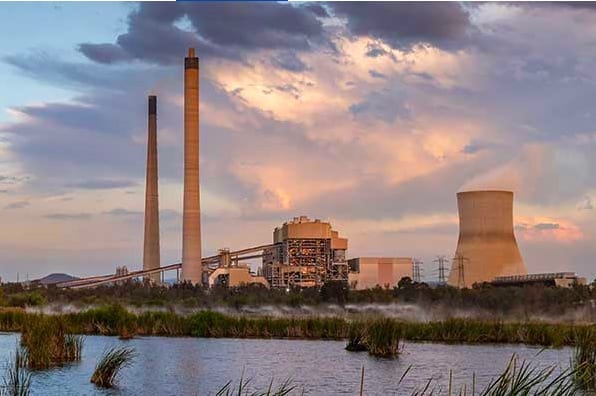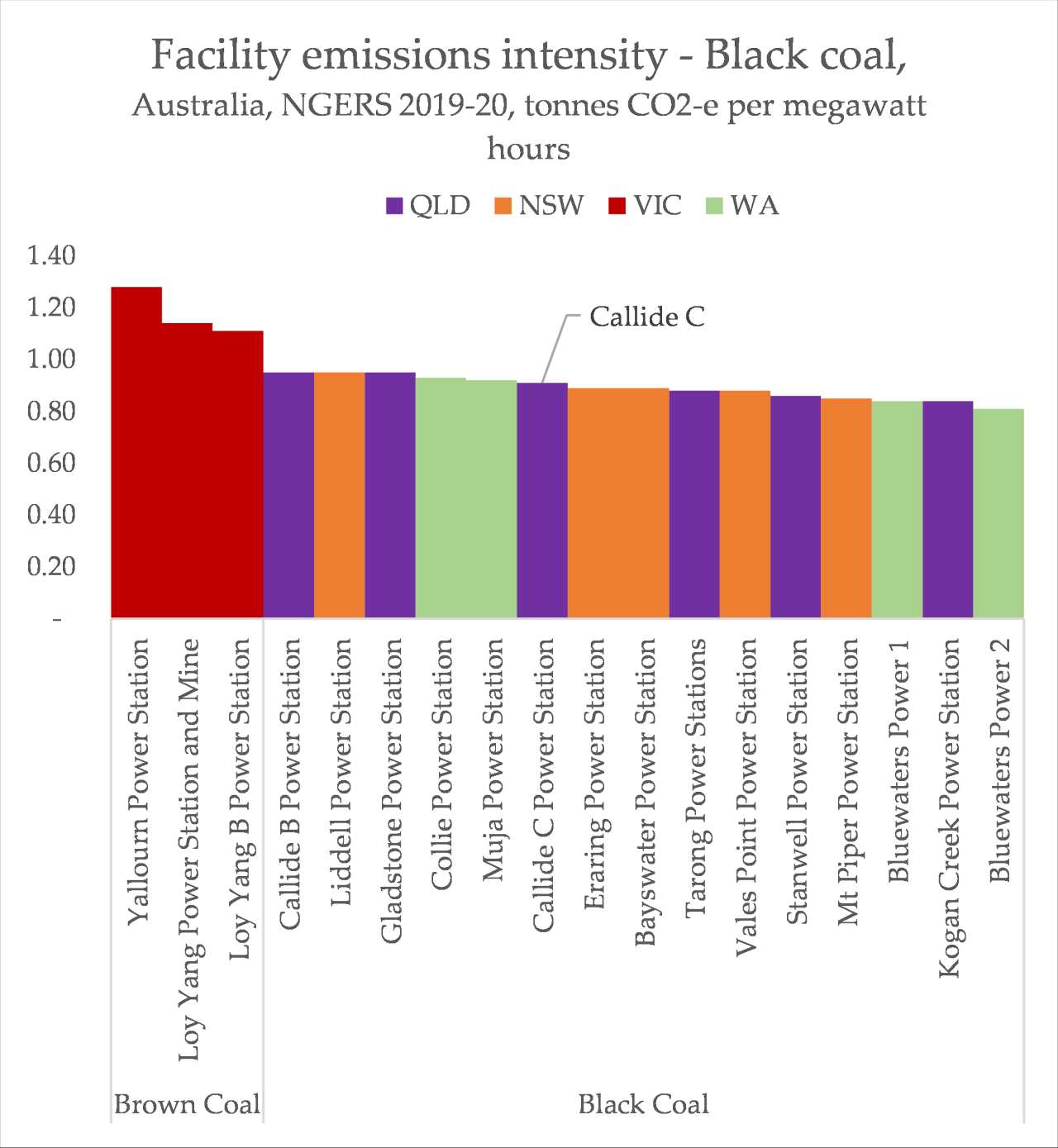Yesterday, a fire at the Queensland Callide C coal plant caused the facility to suddenly snap offline. That triggered a cascade of flow-on events, including the disconnection of multiple transmission lines, and other generators, along with a huge ‘frequency excursion‘, in which the normal operating state of the grid begins to stray outside safe parameters.
Nearly half a million customers were disconnected, including Brisbane airport, sewage pumps in the Gold Coast, Gold Coast University Hospital (which had to rely on backup generators) and traffic lights. “About 360 traffic intersections across the Brisbane metro region lost power just after 2:00pm, causing “chaos” for drivers ahead of school pick-up time”, wrote the ABC. People were briefly trapped inside a shopping centre.
Queensland energy minister Mick de Brenni pleaded with customers to “please consider conserving energy by turning off appliances, heaters and reverse-cycle air-conditioning”, as the market operator scrambled to restore normality.

This would be significant in any case, but it’s very, very significant because Callide C is one of the newest coal plants on Australia’s grid, built in 2001. It is, in fact, the only coal-fired power plant on AEMO’s generator listing that has not submitted a closure date. Even wind and solar farms, one with an expected closure date of 2120, have submitted this. But why submit a closure date when you’re immortal and invulnerable?
This blackout – caused by a single, clear failure point – makes the rising problems with Australia’s coal industry incredibly clear. This has been happening for some time, and it is likely to get worse.
This coal plant was the chosen one
Callide C was meant to be the saviour of the coal industry. The plant is ‘supercritical’ – that is, it operates at higher pressure that enable a slightly lower emissions intensity than regular coal plants. Only a minority of Australia’s coal plants are in this category, but for quite some time they have been touted as a “low emissions” way of continuing the life of coal.
“Supercritical coal-fired power stations like Callide C will play a central role in Queensland’s energy mix over the long-term, even as the economy transitions to a renewable energy future,” said then QLD Treasurer Curtis Pitt, in 2017, announcing a $48.5 million overhaul to improve reliability. “The Callide C4 generating unit was last overhauled in 2015, so these works will keep it operating in peak condition into the future, providing reliable electricity for Queensland”. The critical role of supercritical coal, repeated ad nauseum in Australia for decades.
The latest National Greenhouse inventory tells a different story. Callide C sits roughly in the middle of Australia’s coal power stations in terms of emissions intensity – it is utterly unremarkable. And even the least-bad still pumps out eye-watering quantities of planet-heating gases.
Callide (unit A, not C) was also the site of the ‘Callide Oxyfuel project‘, also touted as a technological saviour of the coal industry. Known colloquially as ‘clean coal’, the project was meant to prove that you could comfortably append carbon capture technology so coal plants could chug along merrily without causing climate catastrophe; brainchild of the Australian Coal Association (“Coal21”). “The first and probably last completed coal CCS project in Australia”, energy analyst Simon Holmes à Court told me.
Over the 2 years and nine months it operated, they captured 30 tonnes of carbon dioxide, which was transport 2,000 kilometres by fossil-fuelled road transport and injected into the Otway site. Over the lifetime of Callide C, it has emitted around 114,600,000 tonnes of CO2 equivalent; Callide B around 153,368,919. That’s 267,968,919 in total. Together, the plants emitted just under nine million times more greenhouse gases than captured by the CCS project while it was operating.
Two empty technological promises – of carbon capture and of increasingly fantastical criticalities, met their end at Callide. Yet, when the plant suffered a mortal wound yesterday, Nationals Senator Matt Canavan and LNP MP George Cristensen took to Twitter and Facebook to try and post through it, insisting that the disaster proves that Queensland simply needs more, newer coal-fired power stations (similar to America’s fossil fuel lobby insisting the Texas blackout means more gas plants are needed, or that a pipeline cyberattack means more pipelines are needed).
That argument was already dead. As RenewEconomy reported last year, some of the worst outages are occurring at the newest coal plants. “Most coal power stations are big and when they break down in extreme heat with high electricity demand, it creates serious threats of blackouts”, said the Australia Institute’s Richie Merzian, in September last year. Among the worst performers was another ‘new’, supercritical plant, the Kogan Creek Queensland coal generator.
What yesterday’s blackout shows is something new, and important: we can’t rely on coal anymore; not in the short term or the long term.
An uncontrolled coal exit is catastrophic for communities
It’s still unclear what caused the fire inside Callide C. Canavan posted some rumours that a ‘hydrogen leak’ could have caused the fire, in a very feeble attempt to shift blame onto proposed climate solutions. But this incident sits in a context of a drumbeat of worsening outages, often at critical times such as heatwaves, from Australia’s gargantuan coal plants.
Though the operators of these facilities are spared any pressure or regulation to pay for the harm they cause through air pollution and climate impacts, they are struggling to avoid technological and economic pressures. The growth of renewable energy is creating the need for flexibility and fast ramping, and coal plants are simply failing to provide. And though Australia’s government is attempting to fund fossil plants through a new capacity system, it’s pretty likely this won’t be enough to hold back the tide, either.
All of this sits within the context of a recent IEA report that called for the total phase-out of coal – no matter how ‘critical’ – in advanced economies such as Australia, by 2030, and fully clean grids by 2035, to align with global 1.5C targets. The grid operator’s latest ‘integrated system plan’, published in 2020, included a ‘step change’ scenario that actually gets pretty close to this baseline.
And it’s the opinion of that same grid operator that the ambitious ‘step change’ scenario is more like the central, baseline scenario. “We need to build a system and market now, not in a few decades, that can operate at close to 100% instantaneous renewable energy”, said AEMO’s chief systems design officer, Alex Wonhas.
It was, in fact, a relatively neat coincidence that May 25 also happened to feature the highest wind farm output on record, in Australia, as highlighted by WindLab’s David Osmond. A cool 5,643 megawatts. And the Callide C coal catastrophe occurred only twenty days after government minister Keith Pitt vetoed a loan for the Kaban Energy Hub for not being ‘reliable’ or ‘dispatchable’ enough – a project that will feature a 100 megawatt energy storage system, in addition to wind power.
It is now undeniable that Australia’s coal fleet will collectively retire far earlier than scheduled. That includes Callide C, the only ‘immortal’ coal plant on the grid. But the Australian government is in catastrophic and serious denial of this; and they’re now trying to add years onto these doomed plants, even if doing so increases the risk of uncontrolled blackouts, rising electricity prices and worse climate impacts.
That’s a triple hit of harm to Australians. All this risk, purely to satisfy government ministers skipping over the ground shifting under their feet, while insisting that they’re standing still.
What this should mean, but what it won’t mean
Moments like this also highlight the sheer power of fossil fuel incumbency in avoiding any serious scrutiny. Literally during the 2016 blackout in South Australia, the Australian Broadcasting Corporation featured Nick Xenophon and Chris Uhlmann directly and immediately blaming the event on wind power.
It took me an incredible amount of digging to find this, but I managed to extract a copy of the Chris Uhlmann interview w/ Nick Xenophon on the night of the SA 2016 blackout, in which he repeatedly blames low wind output for the event. https://t.co/WONWCysjd5
— Ketan Joshi (@KetanJ0) February 7, 2020
That resulted in a significant and quantifiable flow-on impacts, in which trusted coverage was skewed to be anti-renewable, as analysed by writer and academic Ben Eltham, at the time. “This kind of reporting, in which government attacks against renewable energy were reported prominently, dominated the ABC’s coverage of the blackout”.
It’s worth comparing this to coverage of yesterday’s blackout, in which the technology type of the plant is not only not blamed for the failure, but is literally erased from the language used to describe the event. The coal plant is consistently described as a “power plant” or a “power station“, and the widespread, long-lasting blackouts are downgraded to ‘outages’, in much the same way thousands of combustion engine car fires go unreported, while every electric vehicle fire is heralded in media coverage.
Just a regular old power station, yessir pic.twitter.com/s9WoZzuwek
— Ketan Joshi (@KetanJ0) May 25, 2021
This would be fine if it were a consistent approach, but if there had been a catastrophic wind farm fire resulting in hospitals without power, would the facility be described neutrally, as a “power plant”? We all know the answer to that.
Australia’s coal fleet is a triple threat. Every hour of operation worsens the harm we will feel from climate impacts, more than any other single technological source in the country. The machines are failing at their core purpose of ‘reliable’ electricity generation; with outages and unreliability worsening far faster than expected. And their presence can only be economically maintained with strong-arm intervention from a government desperate to prolong their life.
This event should precipitate a renewed focus on this threat, but if the past is anything to go by, it’ll come and go as if it never happened.
See also: Would a big battery have kept the lights on in Queensland?












